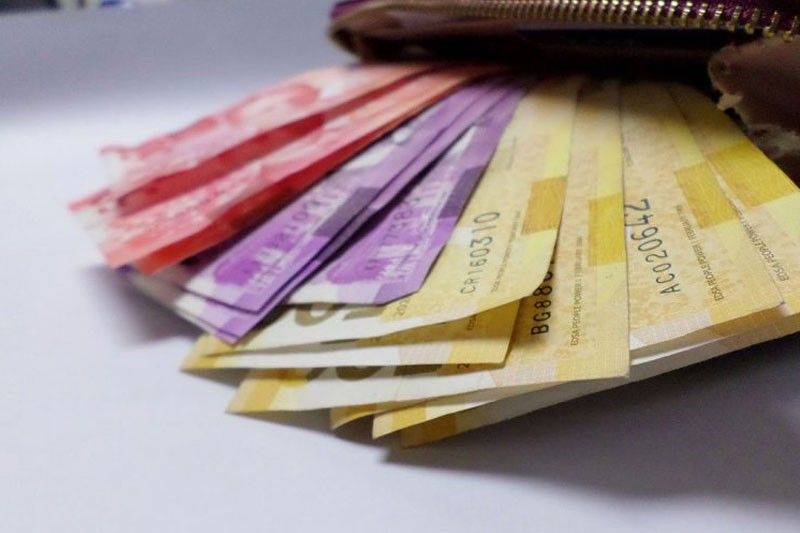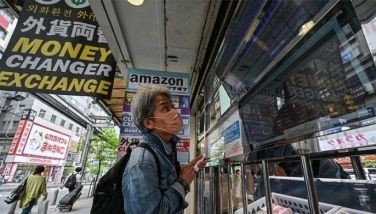Key policy rates may hit 3.5% by yearend

MANILA, Philippines — Bangko Sentral ng Pilipinas (BSP) Governor Felipe Medalla is not discounting the possibility of another 100 basis points in cumulative rate hikes, bringing the benchmark interest rate to 3.50 percent by the end of the year.
“The need to exit the very, very unconventional monetary policies that were necessitated by the pandemic became more urgent because of what’s happening in the advanced economies and because of the supply shocks,” Medalla said in an interview with Bloomberg Television.
Inflation quickened further to 6.1 percent in June, the highest since the 6.9 percent recorded in October 2018, from 5.4 percent in May.
This brought the average inflation to 4.4 percent in the first half, exceeding the central bank’s two to four percent target.
Originally, Medalla said the BSP was looking at implementing an exit strategy for its extraordinary relief measures by the third or fourth quarter, but recent developments prompted monetary authorities to commence the withdrawal earlier.
“What happened was recent developments made us advance the implementation of the exit plan. So, at the very least, we should be moving to a policy rate that is higher than the midpoint of our (inflation) target, which is three percent at the very least. So that means we have to do a hundred more at least,” Medalla said.
The Monetary Board started its interest rate liftoff after it delivered a 25-basis-point rate hike last May 19, the first in more than three years or since November 2018, followed by another 25-basis-point increase last June 23 to curb rising inflationary expectations.
The back-to-back rate hikes brought the overnight reverse repurchase rate to 2.50 percent from an all-time low of two percent as Medalla and former BSP chief and now Finance Secretary Benjamin Diokno pushed the gradual normalization of interest rates.
“Including the first 50 basis points, I will not rule out the possibility, of course this are all data dependent, I will not rule out the policy rate increasing by another 150 basis points by the end of the year,” Medalla said.
The BSP did the heavy lifting during the height of the pandemic, slashing interest rates by 200 basis points, lowering the reserve requirement ratio, extending P540 billion in provisional advanced to the national government that was later reduced to P300 billion at the start of 2022, and purchasing government securities in the secondary market.
These pandemic response measures unleashed P2.3 trillion into the financial system to cushion the impact of the global health crisis on the economy.
The BSP has four remaining rate-setting meetings this year scheduled on Aug. 18, Sept. 22, Nov. 17, and Dec. 15.
“Right now I cannot predict how every (Monetary) Board member will vote. But it is at least 25 (basis points) and maybe 50 (basis points). I don’t think anybody wants 75 (basis points),” the BSP chief said.
Personally, Medalla said the central bank could deliver a more aggressive 50 basis points rate hike if the month-on-month inflation is 0.7 percentage points.
“If we get bad month-on-month numbers we will have to respond because even though the basic cost of inflation is supplied. Its likely to have a knock on effect on expectations and therefore we will have to act before the supply shocks are converted to higher future inflationary expectations,” Medalla said.
The BSP Monetary Board now expects inflation to exceed the two to four percent target over the next two years at five instead of 4.6 percent for 2022 and to 4.2 instead of 3.9 percent for 2023.
On the peso, the BSP governor said the depreciation of the local currency is now a cause of concern as a one percent movement in the exchange rate adds 0.05 to 0.1 percent to inflation.
Medalla reiterated that the BSP does not intend to match the aggressive 75 basis points rate hike delivered by the US Federal Reserve last June 15.
“Nonetheless if the increase in exchange rate because of the interest rate differential would add on further to inflationary expectations and to knock on effects of the supply side effects of inflation, then we will have policy rates that are higher than otherwise than the normal times,” Medalla said.
He reiterated that “these are not normal times, we are a lot more concerned about the inflation effects. of a more depreciated peso given that we have already very high inflation.”
The peso has emerged as the worst performing currency in ASEAN, weakening by eight percent as it breached the 55 to $1 level from the end 2021 level of 50.999 to $1.
- Latest
- Trending





























